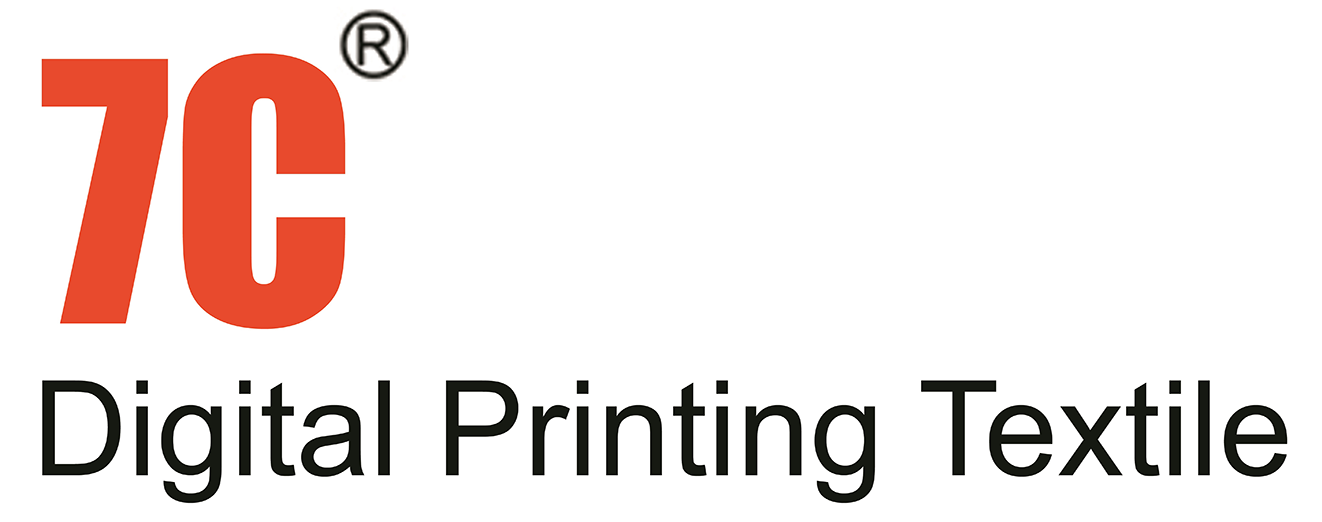Opportunities, Challenges and Trends in the Global Digital Printing Ink Industry
The history of digital inkjet printing can be traced back to 1884, the American C H Richard put water in a syringe, squeezing the end of the needle flew out droplets, which was inspired by the fact that if you make this flying liquid charged, with electricity to control its fall point, you can form a picture on paper, which is called fog ink printing. 1972 Siemens introduced piezoelectric on-demand inkjet technology, so that the development of inkjet technology into a controlled In 1979 Canon introduced thermal foaming on-demand inkjet technology, and in 1984 HP introduced a similar thermal foaming on-demand inkjet technology. Then came Epson's Micro Piezo technology, HP's Frito-Lay technology, and CANON's FINE technology, among others. In recent years, many manufacturers have introduced new inkjet heads, such as Toshiba CA4 inkjet heads, Fuji Dimatix M series inkjet head arrays, Panasonic inkjet head arrays, etc., which have been used in inkjet printing equipment and other fields.
1、Global development overview
The history of digital inkjet printing can be traced back to 1884, the American C H Richard put water in a syringe, squeezing the end of the needle flew out droplets, which was inspired by the fact that if you make this flying liquid charged, with electricity to control its fall point, you can form a picture on paper, which is called fog ink printing. 1972 Siemens introduced piezoelectric on-demand inkjet technology, so that the development of inkjet technology into a controlled In 1979 Canon introduced thermal foaming on-demand inkjet technology, and in 1984 HP introduced a similar thermal foaming on-demand inkjet technology. Then came Epson's Micro Piezo technology, HP's Frito-Lay technology, and CANON's FINE technology, among others. In recent years, many manufacturers have introduced new inkjet heads, such as Toshiba CA4 inkjet heads, Fuji Dimatix M series inkjet head arrays, Panasonic inkjet head arrays, etc., which have been used in inkjet printing equipment and other fields.
Digital inkjet printing has now become an industry-recognized focal point for the development of the digital printing industry, and in the North American market, which accounts for half of the total global printing scale, its inkjet printing revenue accounts for more than 70% of the annual revenue. The inkjet printing market is expected to reach a total size of $90.3 billion by 2020, and within the next 10 years, inkjet printing technology will be comparable to traditional printing technology in terms of print quality, print speed and production costs, leading the future development trend of the printing industry. Along with the booming market for inkjet printing, inkjet ink sales have also maintained continuous growth, and according to statistics, global inkjet ink sales in 2018 were around 182,900 tons, or approximately $4,889 million, and will continue to expand at a compound annual growth rate of 10.7% over the next five years.
At present, water-based ink and solvent-based ink still occupies the dominant position in the inkjet ink market, but with the continuous development of the UV ink market, while the continuous improvement of environmental protection requirements for inkjet printing, UV ink is bound to be able to get rapid development, market share has been continuously improved.
2、Domestic development overview
Printing ink is a high-end fine chemical products, due to foreign nozzles, ink technology monopoly, before 2000, China has been dependent on imported equipment supporting the ink, domestic ink, especially high-end functional ink development lags behind. China's printing ink industry has mainly experienced the following development stages.
Before 2000 belonged to the stage of complete dependence on imports, at this stage, although the domestic inkjet engineering CAD with plotter, color inkjet photo machine, 300 DPI below the home inkjet printer, but the ink all rely on imports. The higher price of imported ink to the domestic concern about the future development of inkjet technology provides a historical opportunity to develop the national inkjet printing industry.
From 2000 to 2010, domestic ink products have entered the market, gradually replacing foreign products. At this stage, inkjet technology successively in the office printing, advertising, digital imaging, digital pre-press proofing and other fields began to popularize the application. In these areas there are a number of office inkjet ink, inkjet ink, or digital imaging ink-based ink production enterprises. These ink manufacturers to enter the digital inkjet market, adhere to their own advantages of the application direction, and achieved faster development. By 2010, the office printing field printing market has formed a domestic ink-based situation; in the field of digital imaging, the formation of domestic ink and imported ink long-term counterbalance; in the field of digital printing and digital printing, showing a domestic ink gradually replace the situation of imported ink. 2010 onwards, China has entered a comprehensive replacement of imported ink stage, and domestic ink adhere to independent innovation, and A number of functional indicators to meet or exceed the imported ink, not only to meet domestic needs, but also began to export ink to other countries in bulk. At this stage, inkjet technology applications began to enter the industrial field, from the advertising industry, the imaging industry into the textile printing industry, packaging and publications digital printing industry, construction and decoration materials and other industries. Domestic ink due to its low cost, good quality, functional innovation and other advantages, gradually to the international market, China has become one of the world's most important ink exporting countries.
3, industry development opportunities
(1) the support of industrial policy
Digital printing technology and materials industry is the national, local governments and other relevant departments focus on encouraging strategic emerging industries. At present, China's various types of industrial printing industry in energy consumption and emissions and other aspects of many problems, digital printing technology has reduced manual energy consumption, reduce pollution and waste emissions and other advantages of green and clean production technology, in line with the national energy saving and emission reduction of traditional printing industry, digital transformation, as well as speed up the breakthrough of new materials industry key technologies, expand its application in a new generation of information technology, high-end equipment manufacturing industry guidance Requirements. The "Thirteenth Five-Year" National Strategic Emerging Industries Development Plan, the "Thirteenth Five-Year" Development Plan for the Printing Industry and the "Guideline for the Development of Key Common Technologies in the Industry (2017)" and a series of other national, local and industry policies have been launched, providing strong support for the healthy development of the digital printing industry. The launch of a series of national, local and industry policies, such as the "Thirteenth Five-Year Plan" and the "Guideline for the Development of Key Common Technologies in the Industry (2017)", has provided strong policy support and institutional protection for the healthy development of the digital printing industry and brought good development opportunities.
(2) Application areas continue to expand
With the development of the national economy, the further spread of digital products and digital production methods, digital means of production will become an important development direction of various industries, in addition to traditional office printing applications, digital printing technology is increasingly widely used in textile printing, advertising images, packaging and publishing, construction and decoration, electronic circuits, craft decoration, food and medical and aerospace and many other industrial fields. As digital printing technology becomes more widely used, the demand for digital printing will increase significantly for more different types of users. In the future, digital printing technology will continue to develop in the direction of energy saving and environmental protection, functional improvement, and adapt to the broader field of digital printing, digital printing market scale will be further enhanced.
4、Challenges faced
(1) the market competition is fierce, disorderly competition is obvious
Subject to the limitations of the technical level and research and development capabilities, most domestic digital printing functional materials manufacturers are still in the low-end product market, low-price competition, patent infringement and other disruptions to the market order occurs. Part of the lower level of technology, low capital investment in small producers, low quality, low environmental protection investment brought about by low cost impact on the market, resulting in the industry market still shows the trend of disorderly competition, the healthy development of the domestic digital printing functional materials industry has formed a certain adverse impact.
(2) and the development of foreign industries there is a gap
Digital printing technology in Europe, North America and other regions to implement earlier, has been used in a large scale in various industrial fields, generally showing a high level of technology, wide range of applications and brand advantages, etc., compared to small and medium-sized enterprises in the industry in China, its competitive advantage is more obvious. At the same time, digital printing technology based on digital printing ink, equipment, printheads, the main board system and substrate media and other key technologies work together, the key technologies need to maintain a high degree of compatibility between the relationship. The current core technology of digital printhead products are still monopolized by a few manufacturers in Europe and the United States, Japan and other countries, to a certain extent, restricting the overall development of domestic digital printing technology.
5, industry characteristics and development trends
At present, digital printing technology has been promoted and applied in many industrial production applications, and gradually become the leading technology for industrial printing production. At present, the development of digital printing functional materials industry presents the following trends.
(1) the textile ink to higher quality development
Digital printing downstream industries in the fastest growing field is the textile printing, and today's textile ink needs to meet the faster printing speed, fuller color requirements and higher cost requirements. Based on this, ink technology is more inclined to high-quality processing of color materials, such as the disperse dyestuff efficient grinding, water-based pigment color paste grinding technology and other directions of development.
(2) water-based latex-type ink has become the main direction of future development
At present, people pay increasing attention to environmental protection, for printing ink is also the same, its environmental protection has become one of the important indicators of whether to enter the market. In the future, the ink will certainly move toward the direction of harmless to humans and friendly to the environment. Latex-type ink solution in the binder, you can make the water-based ink in the non-coated paper substrate durability and the use of solvent-based or energy-curing type of ink to achieve similar durability, but more environmentally friendly in comparison, is the main direction of the future development of digital inkjet printing technology.
(3) for the user base will be more refined, the ink and application solutions will be used in more areas
As inkjet printing is more widely used, more different needs of users will join the inkjet user group. Inkjet inks need to take more into account the functional requirements of a variety of functional materials screening, synthesis and application process solutions become particularly important, but also contribute to the future development of technology is an important cornerstone.
(4) the adaptability of different materials will continue to enhance the energy-curing ink will be developed significantly
Digital inkjet printing to achieve higher print quality needs to be matched with the appropriate printing media, but a single type of ink is difficult to adapt to various types of media, especially in some non-absorbent coating on the media. This weakness greatly limits the scope of application of inkjet printing. Currently, UV-LED cured inks, EB cured inks and hybrid UV cured inks are energy-curable inks with instant drying capabilities, making them suitable for a variety of different printing media. Therefore, energy-curable inks are the solution to enhance the adaptability of the ink to different materials, and is one of the future direction of ink development.
Recommend Reading







